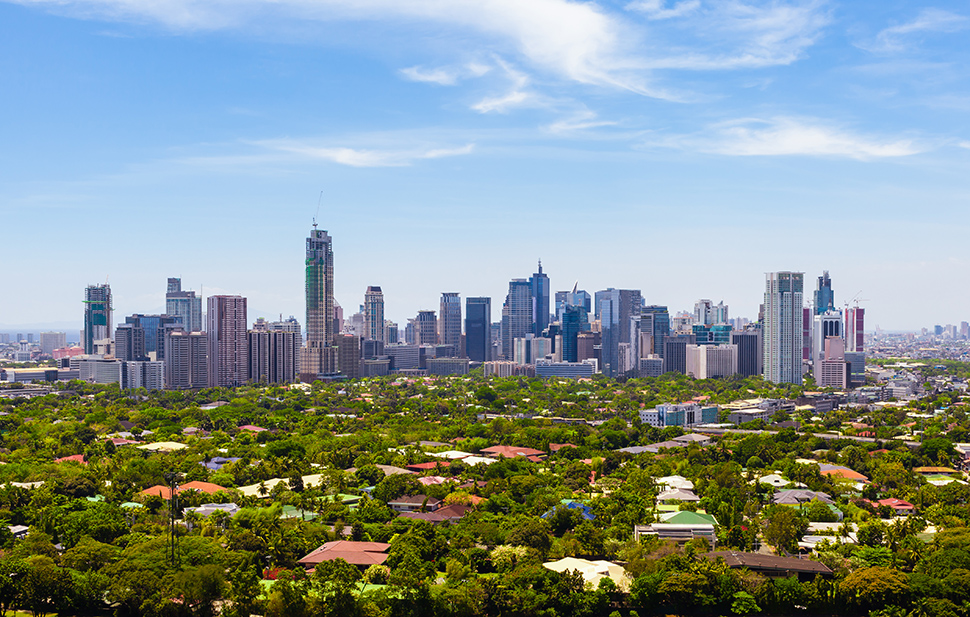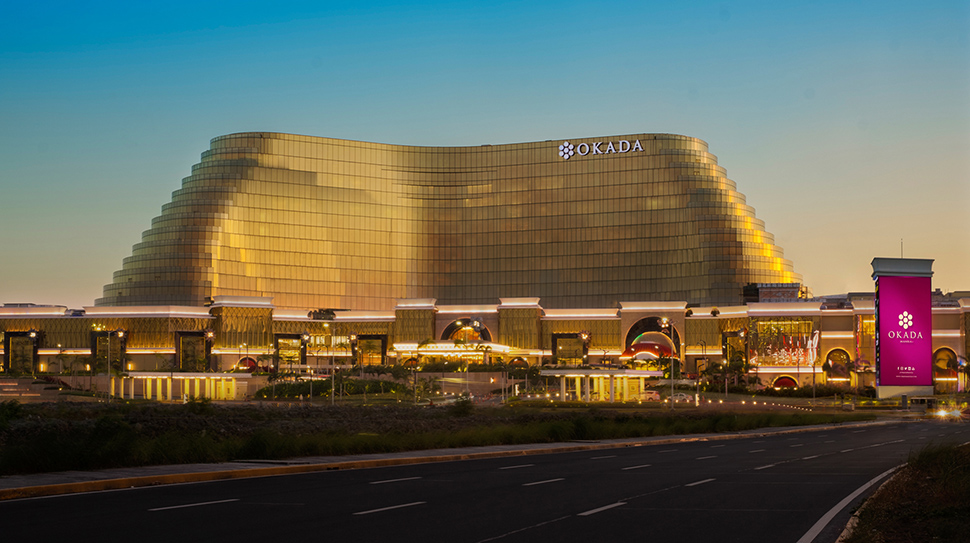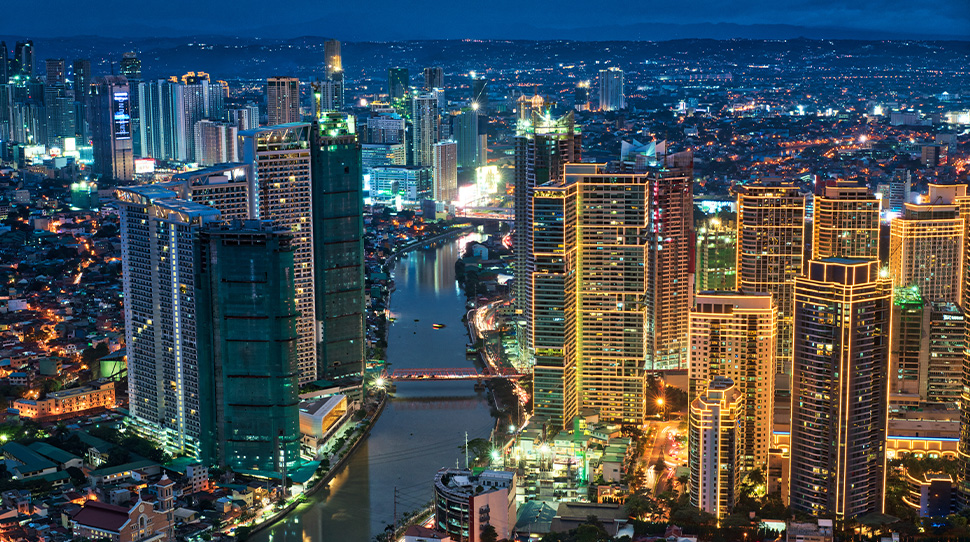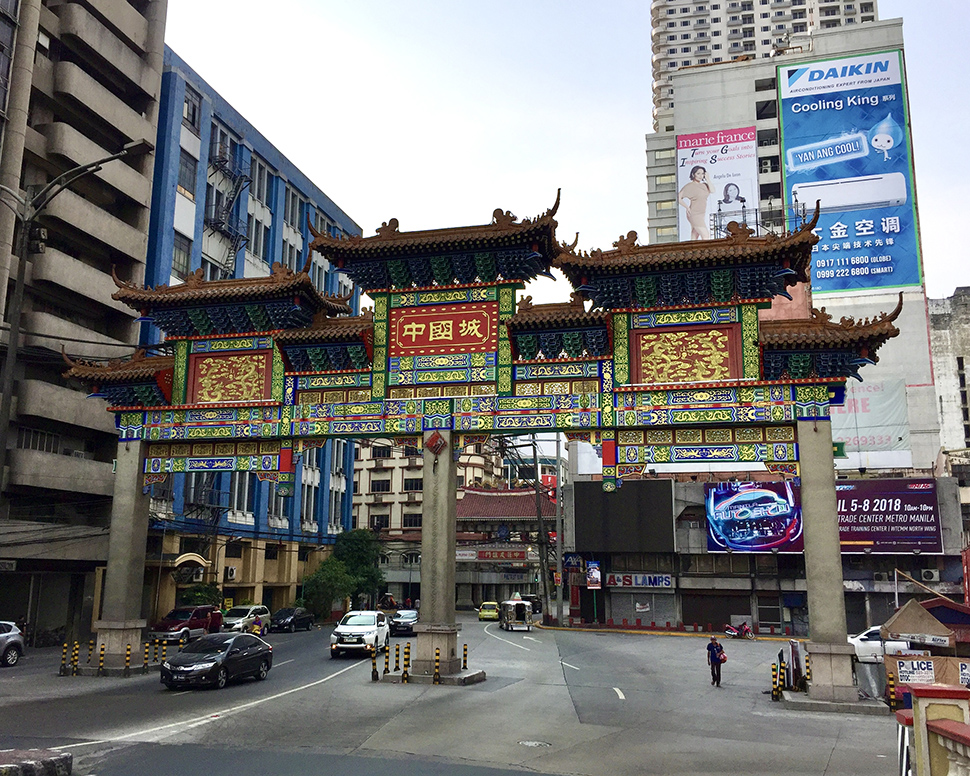

Manila, the Philippines’ bustling capital, offers a unique mix of rich history, vibrant culture and modern luxury. In fact, the city’s luxury travel scene is flourishing with world-class hotels, fine dining and exclusive excursions.
This guide presents an itinerary to maximize your 48 hours in Manila, tailored to travelers looking to immerse themselves in a city where heritage meets the high life.

Day One
Begin your day at your hotel, Forbes Travel Guide Five-Star Okada Manila. This landmark property is celebrated for its grand lobby, lavish accommodations and iconic fountain show. With more than a dozen dining options, the hotel offers an impressive breakfast selection as well. Stop by The Lobby Lounge for some of Manila’s best pastries and local delicacies with artisanal coffee.
Next, embark on a private guided tour of Intramuros, the city’s historic walled quarter dating back to the Spanish colonial era, with a company such as Intramuros Under Siege. This experience includes highlights like Fort Santiago; San Agustin Church, a UNESCO World Heritage Site; and Casa Manila, a museum re-creating the grandeur of colonial life. These landmarks provide rare insights into the city’s storied past.
Before leaving Intramuros, enjoy lunch at Barbara’s Heritage Restaurant, where traditional Filipino cuisine is elevated with authentic ambiance and live cultural performances. This is Filipino heritage on a plate.
After a morning of noshing and exploring, treat yourself to a pampering session back at Five-Star The Retreat Spa at Okada Manila. The 32,000-square-foot sanctuary is the ideal setting for a muscle-relieving Five Element Harmony session, a crystal healing session or an organic facial.

However, if you’d rather place more attention on your wardrobe than wrinkles, make the quick six-mile trip to Greenbelt Mall in Makati, where high-end boutiques and designer brands await. With stores from Louis Vuitton to Gucci, the sophisticated shopping center melds Manila’s love for fashion with global style.
Okada Manila is home to many signature destinations for dinner, including a Japanese restaurant that cooks up unique sushi dishes (Ginza Nagaoka), a grill bar (Enbu) and a place that does modern interpretations of Japanese classics (Kappou Imamura). The luxury hotel also has one of the best Italian fine dining restaurants in the metro area with La Piazza.
When night falls, head to the Poblacion, a hip nightlife district known for its eclectic mix of bars and speakeasies. This neighborhood is a lively blend of Manila’s cosmopolitan spirit and bohemian flair, where you can sip creative cocktails in style. Whether you’re looking for quirky bars or high-end lounges, the area has it. And when you’re seeking some food to soak up all the libations, walk over to Don Pedro Street and grab a taco from crowd-favorite OnlyPans Taqueria.
Day Two
After a busy first day, start your second day with some brunch at A MANO, one of the Philippines’ most acclaimed spots for pizza and pasta. Its dishes are stunning and a celebration of Italian cuisine in the hands of Filipino culinary professionals.
But if you’re in the mood for a more traditional meal, have lunch at Casa Buenas at Newport World Resorts in Pasay City. And if you happen to drop by on a Sunday, try one of the city’s top brunches, a premium buffet featuring Filipino favorites and seafood like lobster, a carving station and all the champagne you can drink.
Manila’s Chinatown in Binondo is the oldest in the world, a destination filled with history, culture and culinary delights. Walking tours through this bustling district reveal a rich tapestry of Filipino-Chinese heritage, from ancient temples and traditional herbal shops to iconic eateries and markets filled with eye-catching ingredients. Guided tours with outlets like Old Manila Walks immerse you in the area’s rich past, with stops at landmarks such as Binondo Church and hidden gems that reflect the unique fusion of Chinese and Filipino influences.

Food enthusiasts can savor authentic dishes — from dumplings to pancit (Filipino stir-fried noodles) and lumpia (spring rolls) — at family-owned restaurants while learning about Chinatown’s role in Manila’s history as a hub of trade and cultural exchange. Each step through Binondo unravels layers of tradition and modernity, making these walking tours an essential experience for those looking to delve into Manila’s rich multicultural fabric.
Wrap up your two-day trip back at Okada Manila, where you’ll find an entertainment calendar filled with ballroom-inspired choreography (Pulse) and acrobat-filled excitement (The Set Up). After either show, stop by the Okada Lounge for bites (crispy salmon belly, crab roll sandwich), beverages and an elegant backdrop for a conversation recapping the weekend.
